Dethonray SG1 Pegasus Bluetooth DAC/AMP – High Resolution Bass Receiver
Dethonray SG1 Pegasus is a 400 USD Bluetooth DAC/AMPlifier, with DPPU (Desktop Plus Power Unit), support for LDAC, aptX HD, aptX LL, aptX, and a large 3000mAh battery. It will be compared to other DAC/AMPs, including iFi xDSD (400 USD), iBasso DX160 (400 USD), Palab M1 Mini (500 USD), and Soundaware A1X PRO (700 USD).
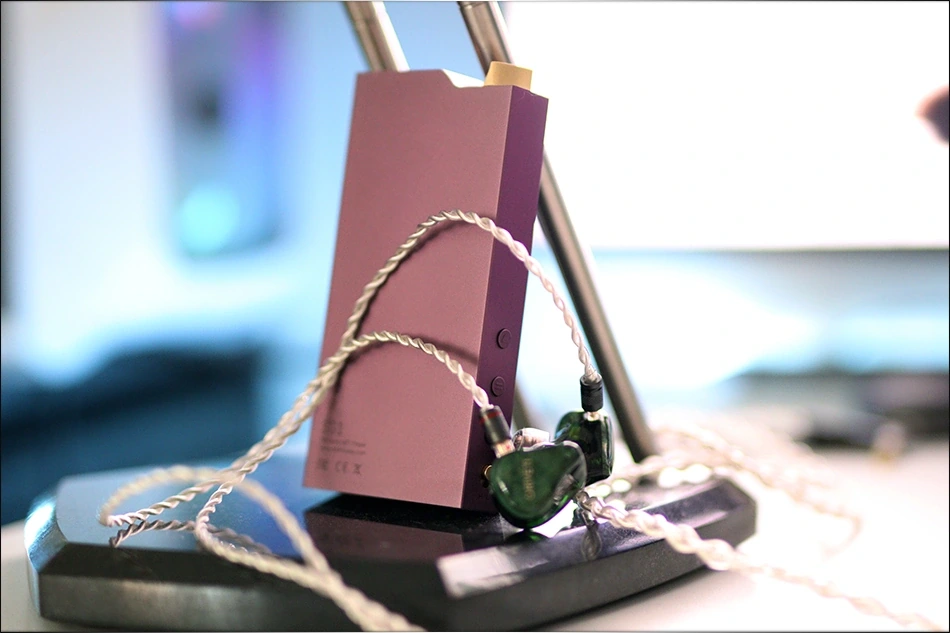
Introduction
Dethonray is a boutique Chinese company, with a very unique product offer, made by DAC/AMPs, DAPs and IEMs. I already reviewed the DTR1+ Music Player and Tender 1 IEMs, both pretty interesting products, with unique sonic performance and signature. The company is outstanding at communication, and it is a smaller company, but you should be able to find their products on Amazon and other outlets too, including Linsoul.
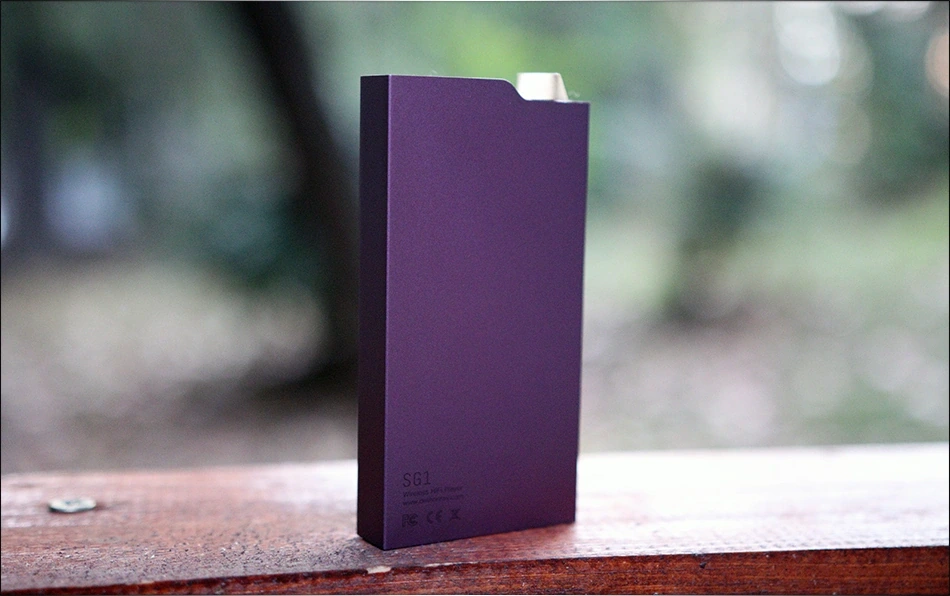
It should be noted that I have absolutely no affiliation with Dethonray. I’d like to thank Dethonray for providing the sample for this review. This review reflects my personal experience with the Dethonray SG1 Pegasus. Every opinion expressed is mine and I stand by it. The purpose of this review is to help those interested in Dethonray SG1 Pegaus Bluetooth Receiver / DAC / AMP find their next music companion.
Product Link
You can grab one from www.amazon.com here: https://amzn.to/3yepcKh
If you’re in the UK, you can grab one from www.amazon.co.uk here: https://amzn.to/3SOKohu
And if you’re from Europe, you can grab one from www.amazon.de here: https://amzn.to/3Rto8ZC
Build Quality/Aesthetics/Features
We have a really unique design for SG1, as it is an industrial-looking device, with a violet / pink color, on the back, and a full black color on the face, but with a small RGB logo that lights up when it is turned on. On the inside, we have a high-quality DAC, the ESS ES9038Q2M, which can also be found on some other high-end DAC/AMPs. The device weighs 186 grams, and it has two headphone outputs, one in the 3.5mm Single Ended format, and one in the 4.4mm Balanced format.
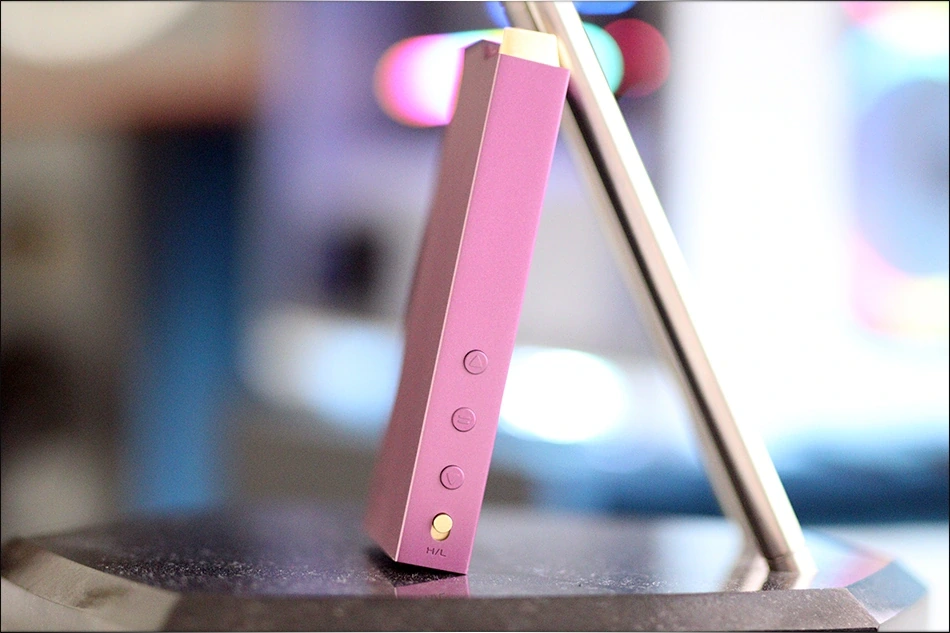
The SNR is quoted to be 104dB, with a THD of 0.06%, which is well below the limit of human hearing. The power output is quoted in volts, and it is quoted to be 2.9V at 32 OHMs, over the single ended output, and 2.8V at 32 OHMs, over the balanced output. The battery life is quoted to be around 8 hours if you’re using the 3.5mm single ended output, and about 6 hours if you’re using the 4.4mm balanced output. This is about right and I can confirm that you’ll be getting around 7 hours over the single ended output and about 5 hours over the balanced output, even at high volumes. SG1 is powered by a 2000mAh battery, which can be charged in about 3.5 hours using any charger you might have around the house.
It is good to hear that we have AAC, apt-X, aptX LL, aptX HD, and LDAC protocols to power SG1. We have a type-c USB port, but my computer does not see SG1 as an external USB DAC, so there’s no data input over the type-C USB port. There is a strong LED light next to the type-C USB input that allows you to see whether SG1 is turned on or not.
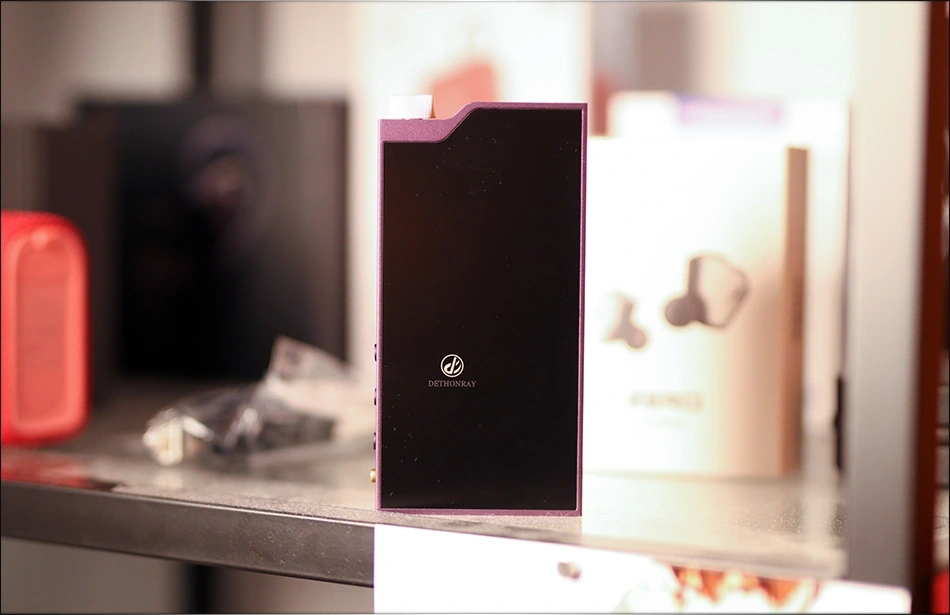
There’s also a superb Dethonray logo with an LED light behind on the face of SG1 Pegasus, and you can see it working. On the left side of the unit, right near the bottom, there are 3 navigation buttons that do work with my Xiaomi Black Shark 4 smartphone, and there’s also a high/low gain switch. The forward / backward buttons always work perfectly, but the play / pause button will take a few seconds to register, if the song was stopped for a while. It stops the song instantly, so it may be an issue caused by my smartphone.
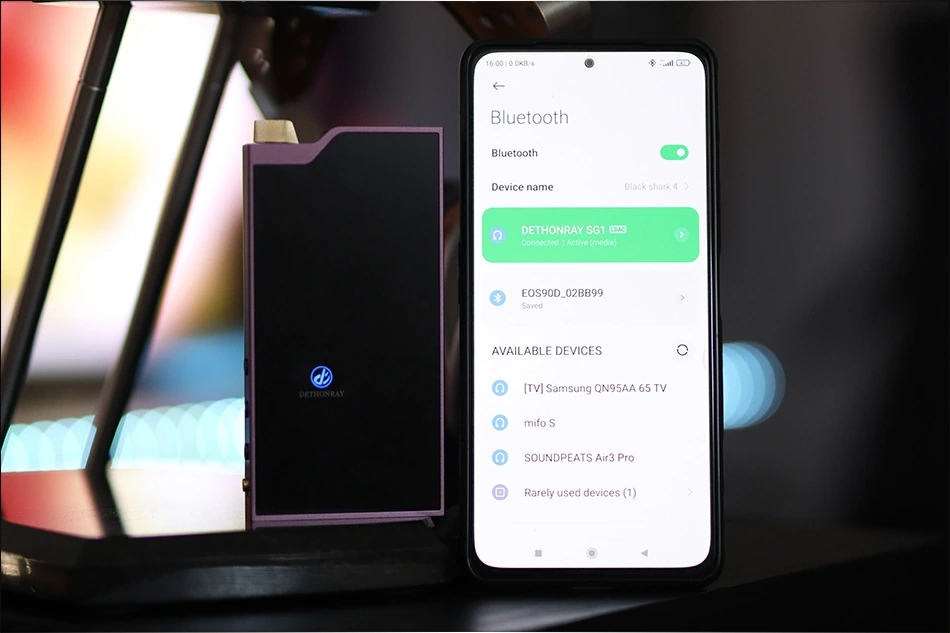
The top of the unit has the two headphone outputs, one in 3.5mm single ended mode, and one in 4.4mm balanced mode. There’s also a volume wheel that acts as the main on/off switch for SG1 Pegasus, and which has enough control for IEMs, and which has no channel imbalance even at the lowest volumes. The unit gets fairly warm during usage, but it is warm, not hot. I think that for a unit that is so beautiful, a silicone case would be a must, if any aftermarket version appears. Keep in mind that the black side of SG1 cannot be covered by a case as that’s where the antennas do their Bluetooth transfer, the metallic frame being a good insulator for the Bluetooth and Wifi signals in general.
All in all, SG1 Pegasus is a really beautiful and sleek device, has sharp edges and corners, but also has Type-C usb input. If you know anything about Dethonray, you’re likely to know that they have a nice amount of driving power and are loved for unique sonic signatures and sonic performance, being a highly specialized boutique company. I was pleasantly surprised by how well SG1 Pegasus works in person, I have not lost the signal even once, and LDAC works perfectly, offering a quality that’s comparable with any wired USB DAC/AMP Dongle such as Lotoo PAW S2, Khadas Tone2 PRO, or iFi Audio Hip-Dac2. The Bluetooth signal strength is unique for SG1 Pegasus, most LDAC based Bluetooth DAC/AMPs aren’t quite as stable. If the unit wasn’t a bit heavy and a bit large, it would make a superb running / jogging / gym dac/amp.
Sound Quality
I cannot begin to tell you how enjoyable using SG1 is, you have quite literally a high-end flagship audiophile source in quality and presentation, but it is Bluetooth with LDAC, and sounds just as good as most wired sources, without you having to clump yourself with those. I see such high potential for SG1, especially for those watching stuff on smartphones or tablets (I got a Huawei tablet and I love watching concerts while laying down and relaxing), also SG1 has a fairly low background noise so it should be ok for most IEMs. You can hear a faint hissing if no music is playing and your IEMs are sensitive, for example I hear something with Fir Audio Ne4 and Campfire Atlas, but I don’t hear much background noise with Final Audio A8000, and less sensitive IEMs. I suggest always keeping your smartphone / source at maximum digital volume and using the potentiometer on SG1 to set the volume for the song you’re enjoying.
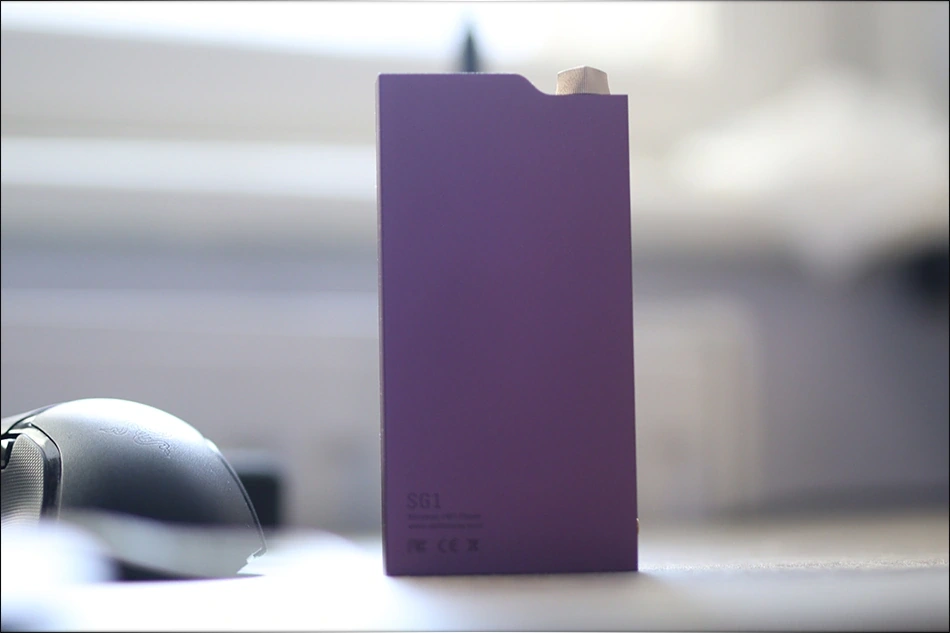
Back to the signature of Pegasus SG1, this is a really thick, lush and deep sounding receiver, with such a clear and clean outline of bass, but also such a strong and bold bass that you could call it the Bass Player or BassReceiver and not be wrong about its tuning. Happily, this doesn’t mean any recess or cut on the finer details, but a really clean, punchy and dynamic sound with superb treble, airy presentation, but a really satisfying bass.
The bass is clearly the central element of the SG1 sonic presentation, as it has a really bold, deep, lush and thick bass. This is the receiver to get if you love bass. You can quickly erase FiiO BTR5, BTR7 and any other dongle off your list, SG1 Pegasus plays in another league entirely, it has depth, it has speed, it has volume, and it can move air, as low as 20 Hz, allowing you to hear that true deep bass. In fact, the tuning is not neutral at all, and it has more bass than any other source I have at the moment, having instantly the most ferocious, biggest, strongest and most controlled bass. It easily outclasses iBasso DX320, Astell & Kern SE180, and Dethonray DTR1 Prelude in Bass quantity, impact and overall power. The signature follows a really strong bottom outline that continues up to the midbass, and even a bit into the upper bass. This being said, I would never call it bleeding into the mids, but it does add weight and substance to the mids, giving the whole sound a really satisfying and pleasing presentation.
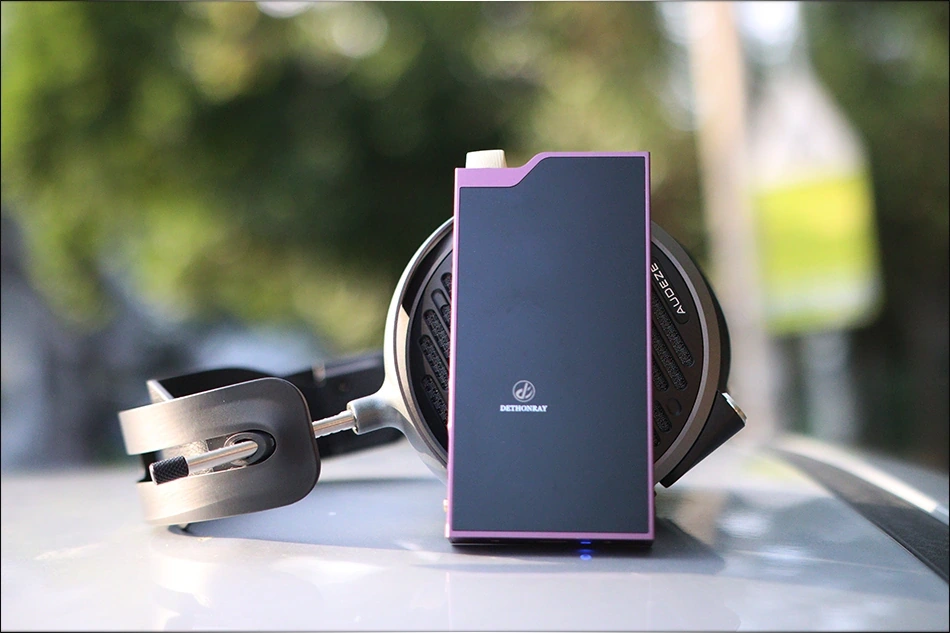
If you’re into liquid and fluid textures, the midrange of SG1 Pegasus will be pure love for your ears, as it paints the cleanest, most fluid and fatigue-free sound I ever heard in my entire life. Somehow, it can calm down even old music, to make it musical and pleasing. I’m talking about old Iron Maiden, and first albums of Dance Gavin Dance, stuff that was bright and harsh, SG1 makes it simply ear love, adding weight to the midrange, taking out the harshness and the dry textures that some albums were mastered with. The drawback is that this signature is audible with all music that SG1 Pegasus is playing, with no exception. Everything sounds thick, lush, rich and organic, music always has this strong outline, exceptional clarity, and fluid texture. This helps with the dynamics, as SG1 Pegasus has one of the best impacts I’ve heard in a portable below 1000 USD. One important thing to remember is that the transition between the midrange and the upper midrange is peaked a bit, so violins, pianos, as well as female voices never sound too thick or lack emotion, and the signature takes quite a bit from the Harman curve. Playing back guitars is as vivid and realistic as you’d imagine, and well, I have a guitar amp and a guitar to tell, it emulates large cabinets rather well. Most sources that are linear sound closer to small and anemic cabinets with guitars, while SG1 emulates that feeling of a large and beefy electric guitar amp rather well. In fact, this would describe its sound well, SG1 Pegasus always sounds huge, large and beefy. It is never distorted though.
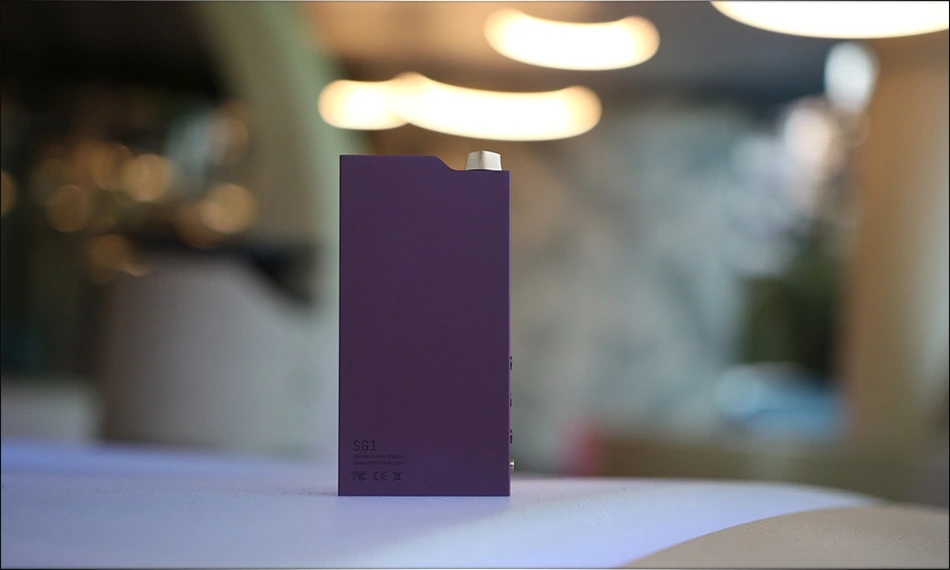
The cost is in the treble, where SG1 Pegasus has a pretty strong recess, and most music has a much calmer treble, with a non-fatiguing and smooth presentation. This doesn’t mean it is rolled off, as in disappearing, but the whole treble, from the mid treble to the upper treble, is recessed compared to the midrange, which is also recessed compared to the bass. The treble is really enjoyable with rock, metal and music that was quite harsh, but can sound a bit too calm and smooth for music that didn’t have too much treble to begin with. Happily, SG1 manages to achieve super good soundstage and instrument separation, which is aided by the superb detailing and with a strong and bold bass, the sound of SG1 is the most impressive I’ve heard below 1000 USD for a portable. It isn’t the most neutral or the most analytical, but the punchiness and weight of the sound is just superb. For example, listening to some Coffinshakers through SG1 Pegasus makes them really come alive and brings forward the best in their music, adds more weight and emotion to their songs.
Comparisons
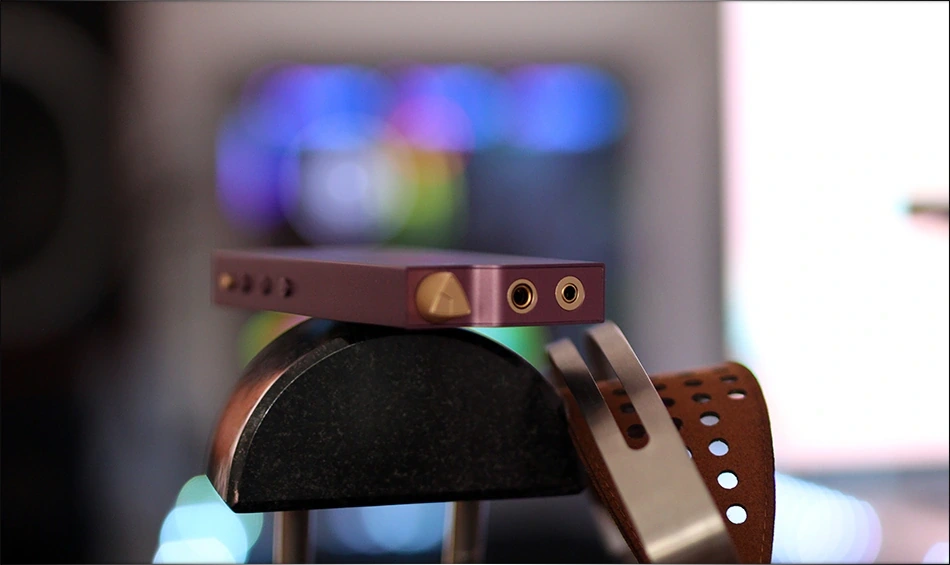
Dethonray SG1 Pegasus vs Soundaware A1X (400 USD vs 700 USD) – Although A1X costs much more than SG1 Pegasus and has a much wider usage scenario ready for you, many of you wanted to know how those two compares, so I decided to give it a go. First off, we’ll only study the sonic comparison today, because SG1 is a very simple Bluetooth DAC/AMP, and doesn’t do anything else. The sound of SG1 Pegasus is stronger, literally, as it has a much higher driving power, better impact, and better control at max volume. The general resolution and detail level is better on SG1 Pegasus, it is more impactful, and has a wider soundstage, with better depth and instrument separation. Bass levels in particular are higher, with much better sub low quantity and presence, better sub low extension and with a more airy and sparkly treble, and better general vividness of sound. SG1 Pegasus ends up sounding more alive and makes everything else sound somewhat flat, as we’ll see in the other comparisons too.
Dethonray SG1 Pegasus vs iBasso DX160 (400 USD vs 400 USD) – We have the same price for a DAP and a Bluetooth DAC AMP, so you may want to know what might compel you to go for either, but things are simple here. Besides the raw selection of stuff you can do with each, DX160 is a DAP designed for those who like a versatile product, while SG1 Pegasus is made for those who want a specialist product. The driving power is much higher on SG1 Pegasus, but DX160 has a lower hissing and noise floor for super sensitive IEMs. SG1 Pegasus has better control at super high volumes. We have better impact for SG1 Pegasus which has a deeper, fuller and much more bass in general, a warmer tuning and signature, and somehow a brighter treble, and more sparkle and dynamics. It is more detailed, wider and deeper, with better instrument separation, although you might as well purchase DX160 to use as a source for it, if you don’t want to contaminate your music with notifications and other smartphone-related noises, this being the reason so many audiophiles are using DAPs even for Bluetooth devices.
Dethonray SG1 Pegasus vs Palab M1 Mini (400 USD vs 500 USD) – Palab M1 Mini is one of the very few DAC/AMPs that actually has a similar sonic signature compared to SG1 Pegasus, so at times it feels like they’re brothers with the same sound, but one is wired while the other is wireless. We have a slightly better driving power for SG1 Pegasus, and it has a warmer, thicker, but also punchier sound with better dynamics and a wider plus deeper soundstage than M1 Mini from Palab. Since I considered Palab M1 Mini to be ahead of Chord Mojo already, I can say that if you were considering getting SG1 or Mojo, SG1 will slaughter Chord Mojo when it comes to resolution, impact, bass quantity and bass quality, depth and control, especially at high volumes, where Mojo struggles far more than M1 Mini, but SG1 Pegasus still manages to come up ahead in terms of raw driving power. SG1 Pegasus has a somewhat higher output impedance, so it is less recommended for sensitive IEMs, although you can hear a slight faint hissing with both SG1 Pegasus and M1 Mini, if the IEMs are super sensitive.
Dethonray SG1 Pegasus vs iFi xDSD (400 USD vs 400 USD) – Like with all the comparisons today, the usage scenario of SG1 Pegasus is much more focused, and it feels like Dethonray really wants to make expert devices, while iFi xDSD covers a wider range of users with products like xDSD. The sound will be the most important aspect, so let’s explore the facts that SG1 Pegasus has a better driving power than xDSD, with lower distortion at maximum volume, better control, and a much fuller, cleaner, more dynamic and punchy presentation. The soundstage is much deeper and wider for SG1 Pegasus, and even if you engage all of the tweaks on xDSD, it will still sound flatter than SG1 Pegasus. This also means that xDSD is more neutral than SG1 Pegasus, and SG1 Pegasus has a very colorful and colored signature it imposes on everything it is driving. The resolution is so much better for SG1 Pegasus that it feels like it is coming from an entirely different price range, despite them both being priced the same. The drawback will be that you can only use SG1 Pegasus as a Bluetooth DAC AMP. There’s a slight hissing with both xDSD and SG1 Pegasus with super sensitive IEMs, although it is quieter for xDSD.
Value and Conclusion
With a price tag of 400 USD, the price / performance ratio of SG1 is super high, and even boutique companies like Dethonray are slowly getting updated, and now they have modern USB Type-C inputs, LDAC Bluetooth, and the same superb sonic performance we’re used to getting from the company. Basically, you’re quite unlikely to have anything that comes even close to the performance of SG1 Pegasus, but it comes with the drawback of being such a specialized device that if you don’t need a Bluetooth DAC/AMP, it won’t satisfy you too well.
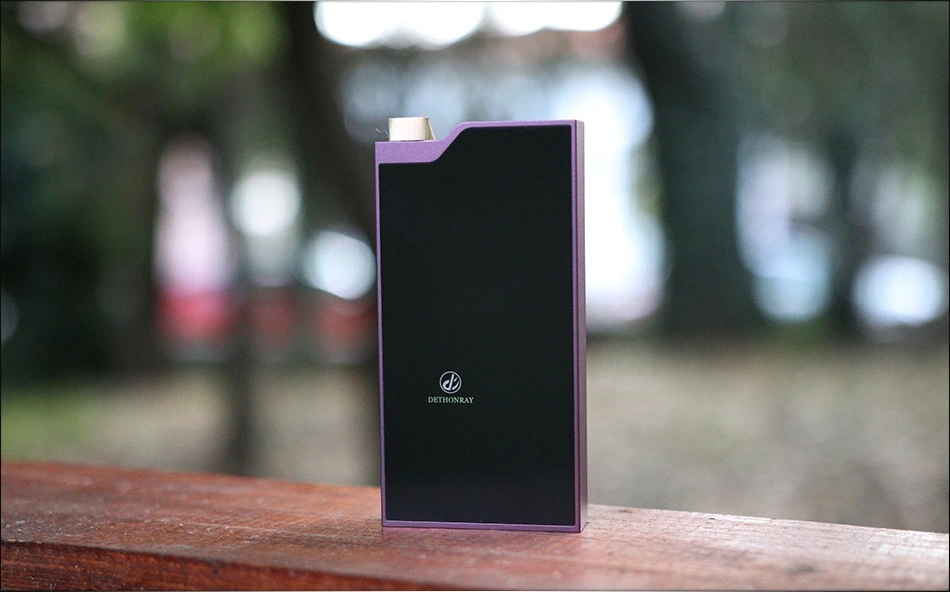
At the end of the day, the performance of SG1 Pegasus has been so outstanding that I’m going to add it to Audiophile-Heaven’s Hall Of Fame as one of the best Bluetooth DAC/AMPs ever to have grazed the air of our planet and give us a music source, and for a super friendly price.
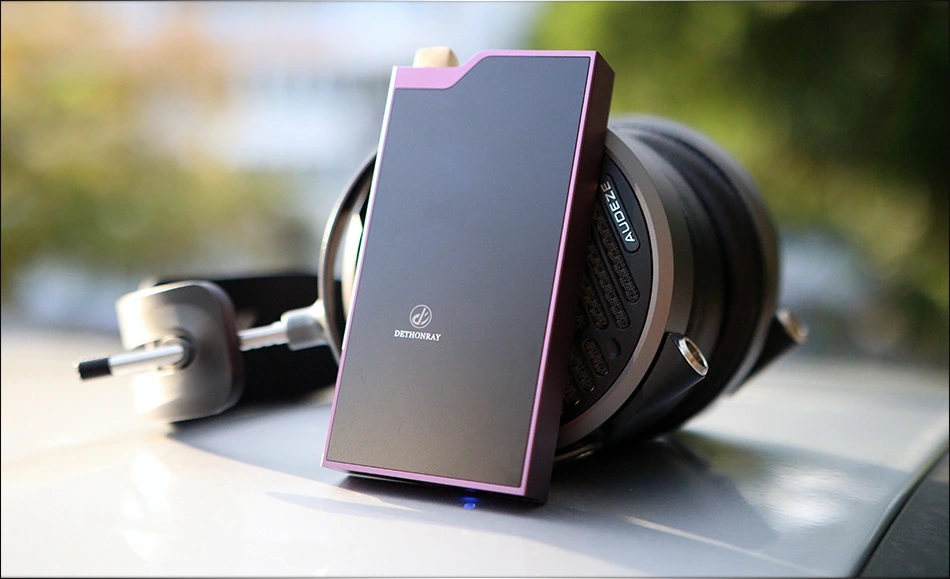
If you’re looking for the ultimate word in Bluetooth DAC/AMPs, if you want something to give you endless pleasure, a delightful, thick and deep bass, impactful and wide sounding midrange, and with airy and clean treble, Dethonray SG1 Pegasus should be perfect for you and bring a smile to your face for years to come.
Product Link
You can grab one from www.amazon.com here: https://amzn.to/3yepcKh
If you’re in the UK, you can grab one from www.amazon.co.uk here: https://amzn.to/3SOKohu
And if you’re from Europe, you can grab one from www.amazon.de here: https://amzn.to/3Rto8ZC
Specifications
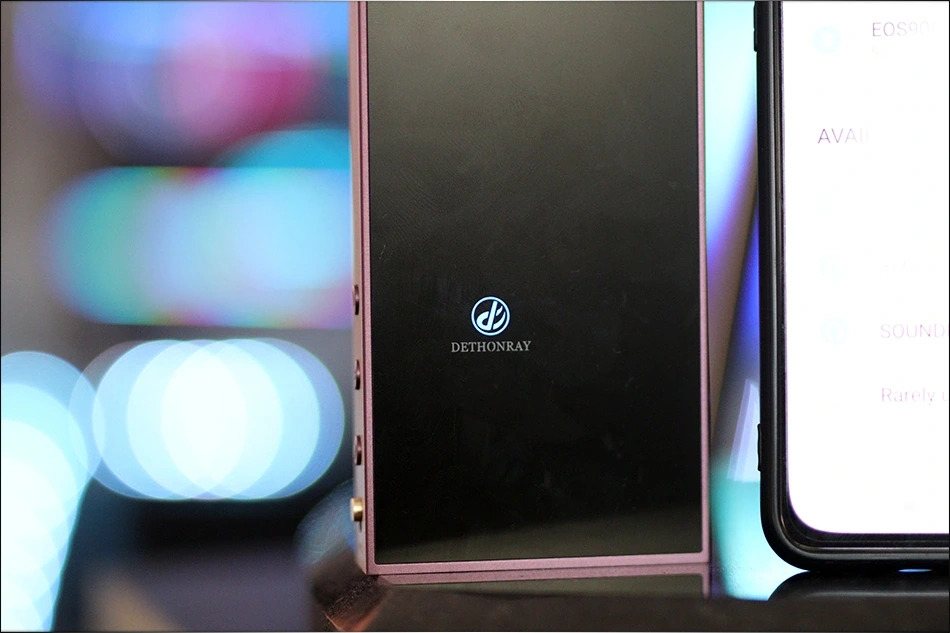
Port:
- Input: Bluetooth
- Output: 3.5 Single End/4.4 Balance
Specification:
- Bluetooth audio transmission format support:
- SBC, MP3, AAC, APT-X, APTX-L, APTX-LL, APTX-HD, LDAC
Performance:
- Frequency Response: 20Hz-20kHz
- THD: 0.06%
- SNR: 104db
MAX. POWER OUTPUT:
- Single End: 2.9V(32Ω)
- Balanced: 2.8V(32Ω)
Others:
- DAC Chip: ES9038Q2M
- Chassis: CNC aluminum alloy
- Dimensions: 117.5 x 59.2 x 16(mm)
- Weight: 186g
- Battery Life: 3.5 – 8 hours, 4.4 – 6 hours
- Charging: 5V 2A/3.5 Hours
- Battery: 2000 mAH
--- Please remember to stay safe, and always have fun while listening to music!---
- If you have a dime to spare, please donate, and help us! It would make the day brighter for me and my wife-
Full Playlist used for this review
We listened to more songs than those named in this playlist, but those are excellent for identifying a sonic signature. I recommend trying most of the songs from this playlist, especially if you’re searching for new music! The playlists are different for Spotify, Tidal and Youtube, and based on the songs I enjoy and are available on each!
https://www.youtube.com/playlist?list=PL_cjBXGmwSHSdGcwuc_bKbBDGHL4QvYBu
https://open.spotify.com/playlist/5J3oloz8Riy9LxEGenOjQ0?si=979ba4f082414be7
https://tidal.com/browse/playlist/330fd544-8e5b-4839-bd35-676b2edbb3d5
--- Contact Us ---






[…] and data limits to the point where even I saw myself recommending a bluetooth DAC AMP like the Dethonray SG1 Pegasus as if it was wired, or even above some other wired options. If you want the official version, […]
Hey George. I am confused; how do you “see” which firmware you’re running?
And how do you update it if you only have a Mac?
Cheers Jon
Dear Jon,
I don’t think you can see the firmware which is currently on, you kinda have to remember that, as for updating on a mac, you have to contact dethonray directly, I only have windows so I don’t have experience on the process
[…] up to aptX, as well as Hi-Res Support. It will be compared to other midrange DAC/AMPs, including Dethonray SG1 Pegasus (400 USD), Aune X1s GT (349 USD), Palab M1 Mini (500 USD), and Singxer SDA-2 (700 […]
Having difficulty installing the two additional drivers – they timeout before completing installation. Any suggestions? Thank you!!
Hello, it does not require any driver, it does not work via cable, only Bluetooth input.
Nice review, as always. Speaking of compatibility, do you think pairing SG1 with an already bassy IEM (like Periodic Audio Carbon) would be too much, or, on the contrary, similar signatures complement each other? In general, what kind of IEM tonality would work best with SG1 as a source?
In the case of SG1, I think that with Periodic Audio Carbon it would work well because the new Carbon V3 has a strong treble and it can help tone it down, but the bass will be rather overwhelming. It has a huge bass, so I would recommend going with it if the IEMs you’re currently using aren’t the most bassy out there. For a pair of IEMs that are already bassy, I’d try Shanling UP5, review coming about it soon. Less pricey, has EQ profiles and slightly less driving power, but also outstanding sound.
Awesome, thanks a lot! I have UP4 and very pleased with the experience 🙂 One extra question, please: how would you compare the sound of SG1 with DX170?
This seems like a really popular question actually. SG1 is warmer, smoother, darker, lushier, thicker sounding. DX170 is more natural, cleaner, also a bit more detailed. If you have bright headphones or IEMs, SG1 is better, while if you have natural sounding headphones you’re already fairly happy with, DX170 will color their sound less.
Many thanks for clarifying, George!